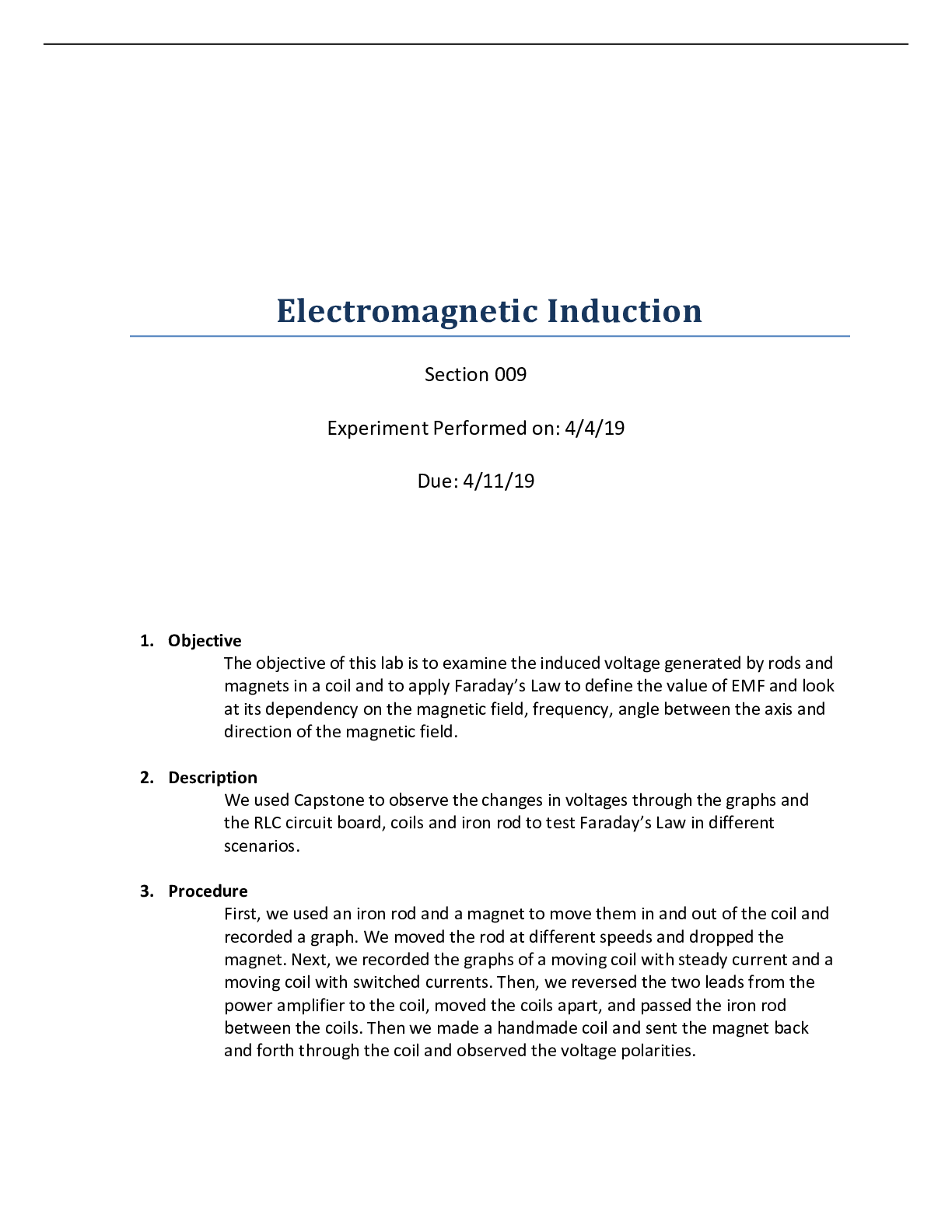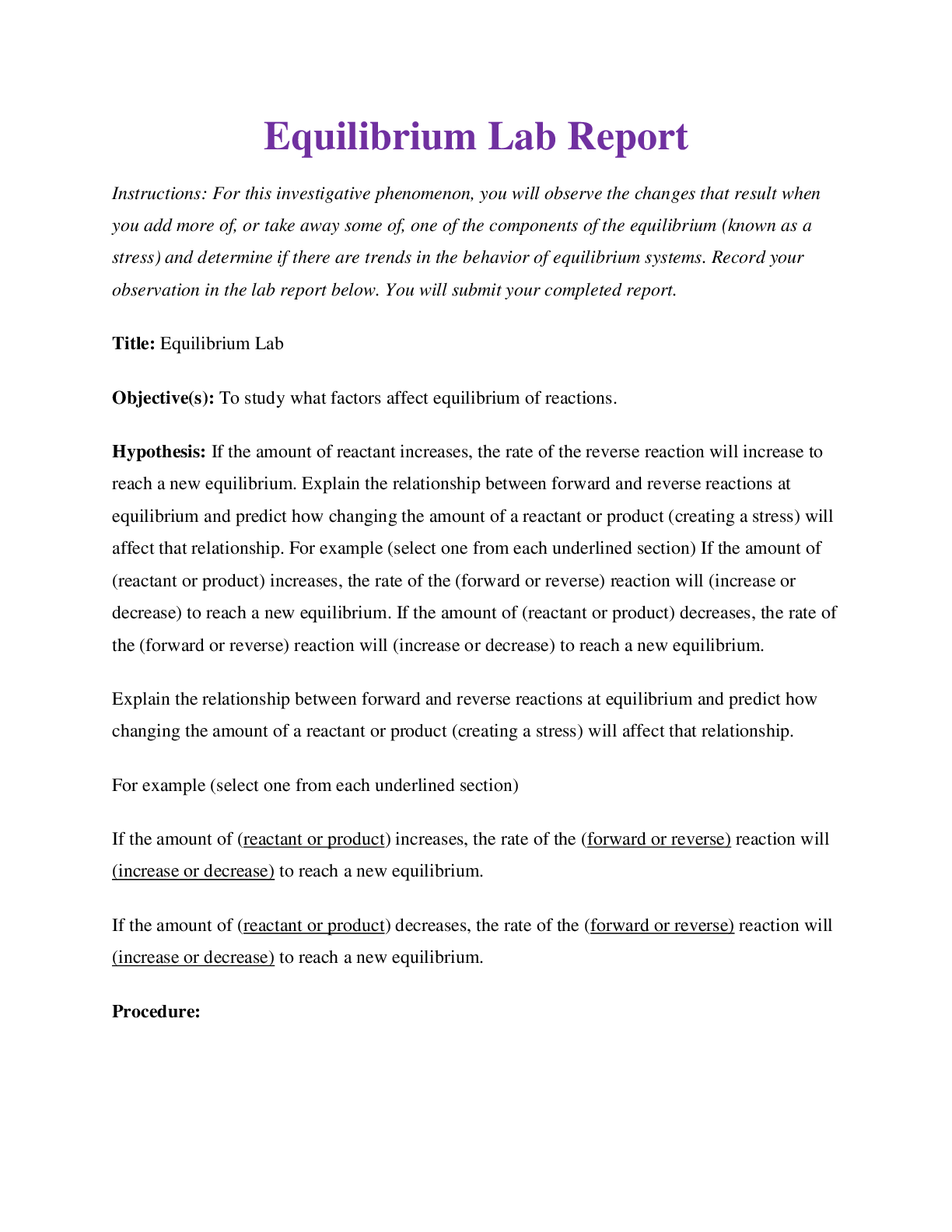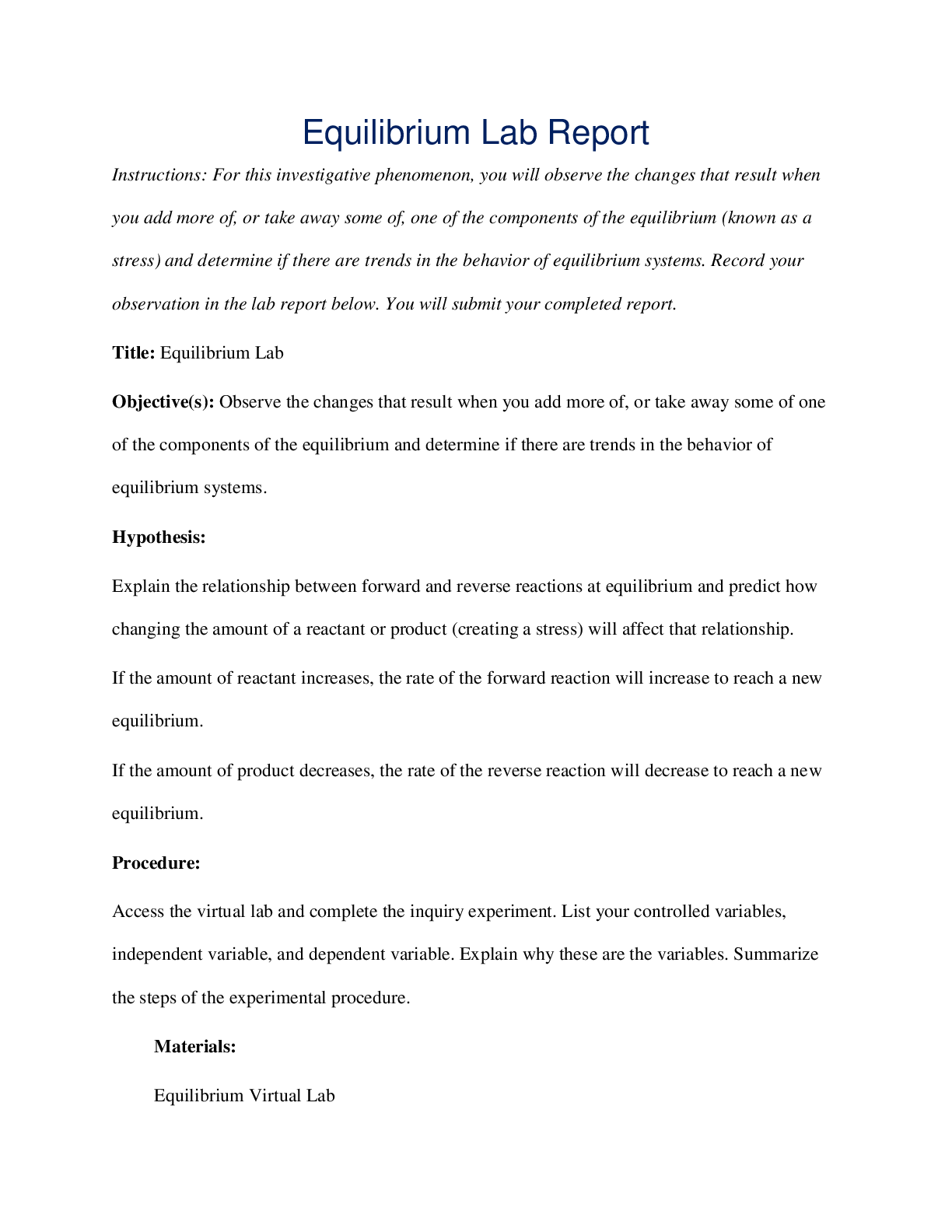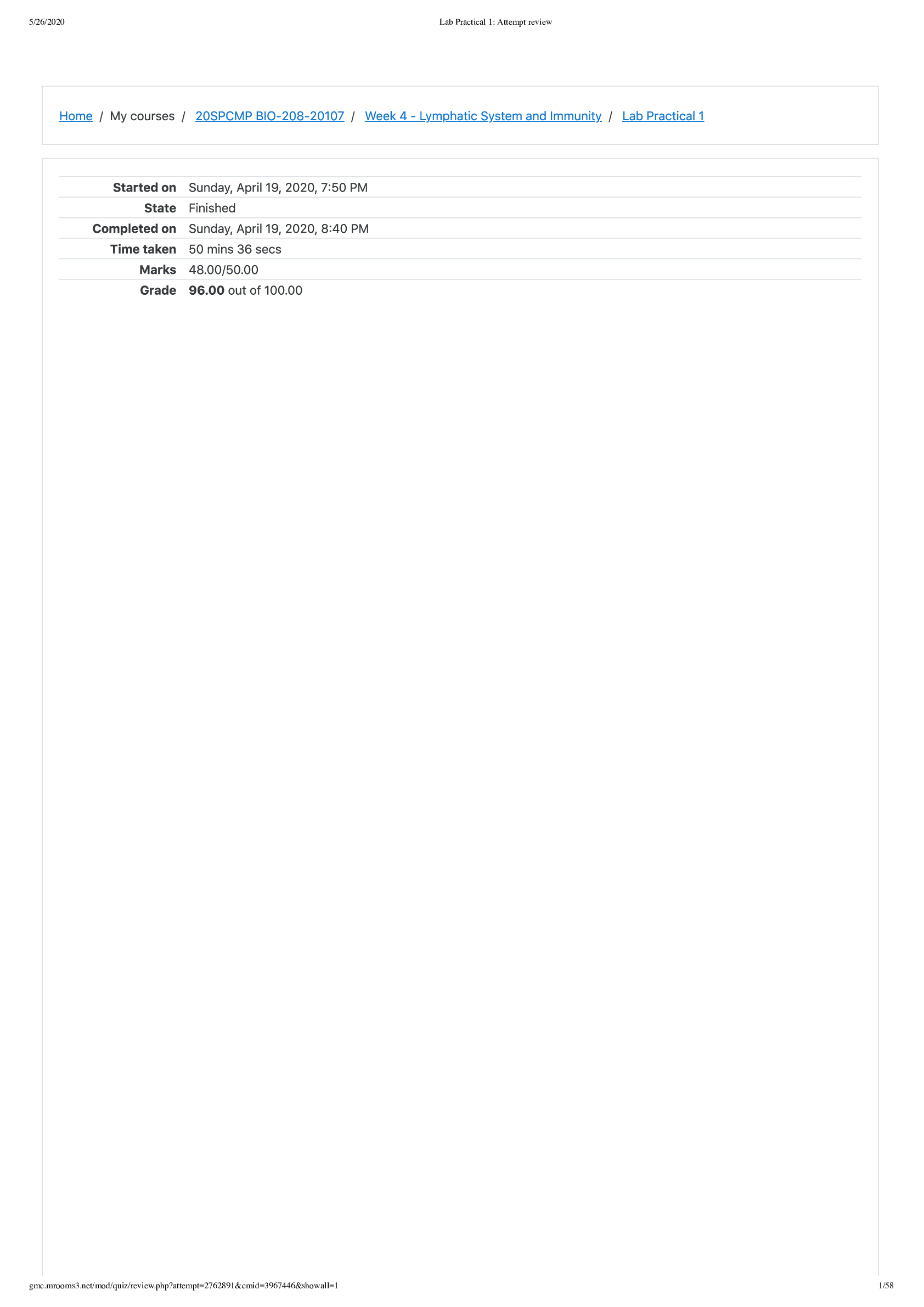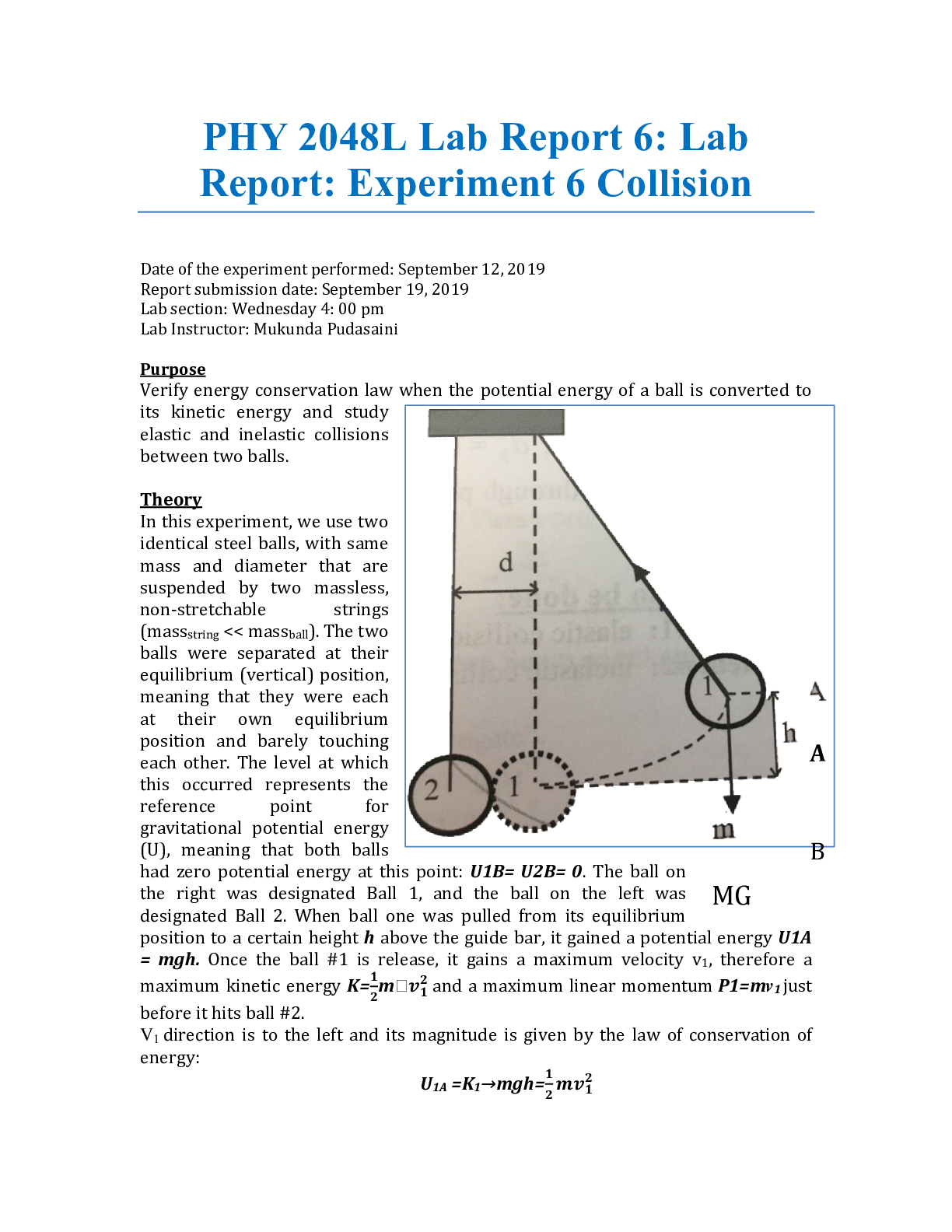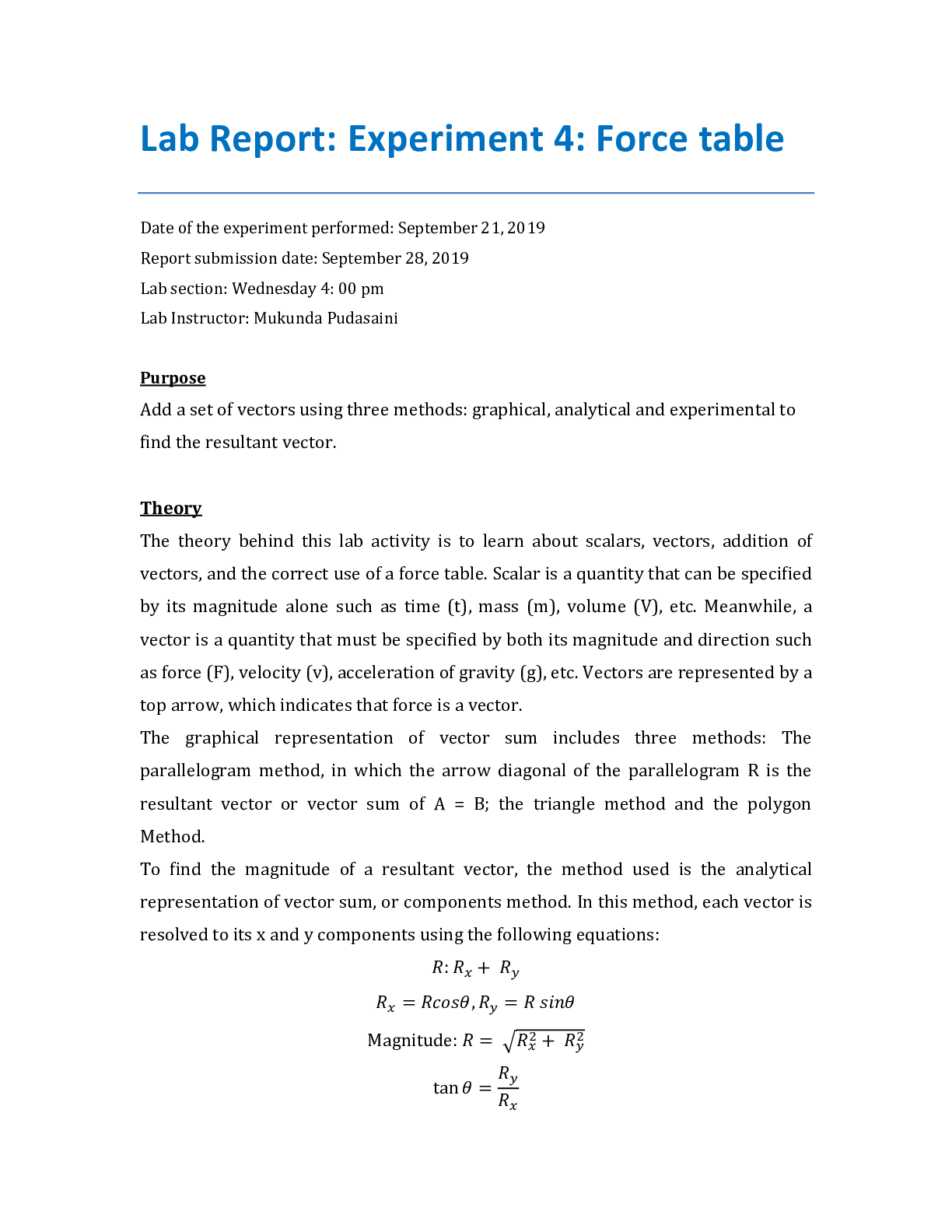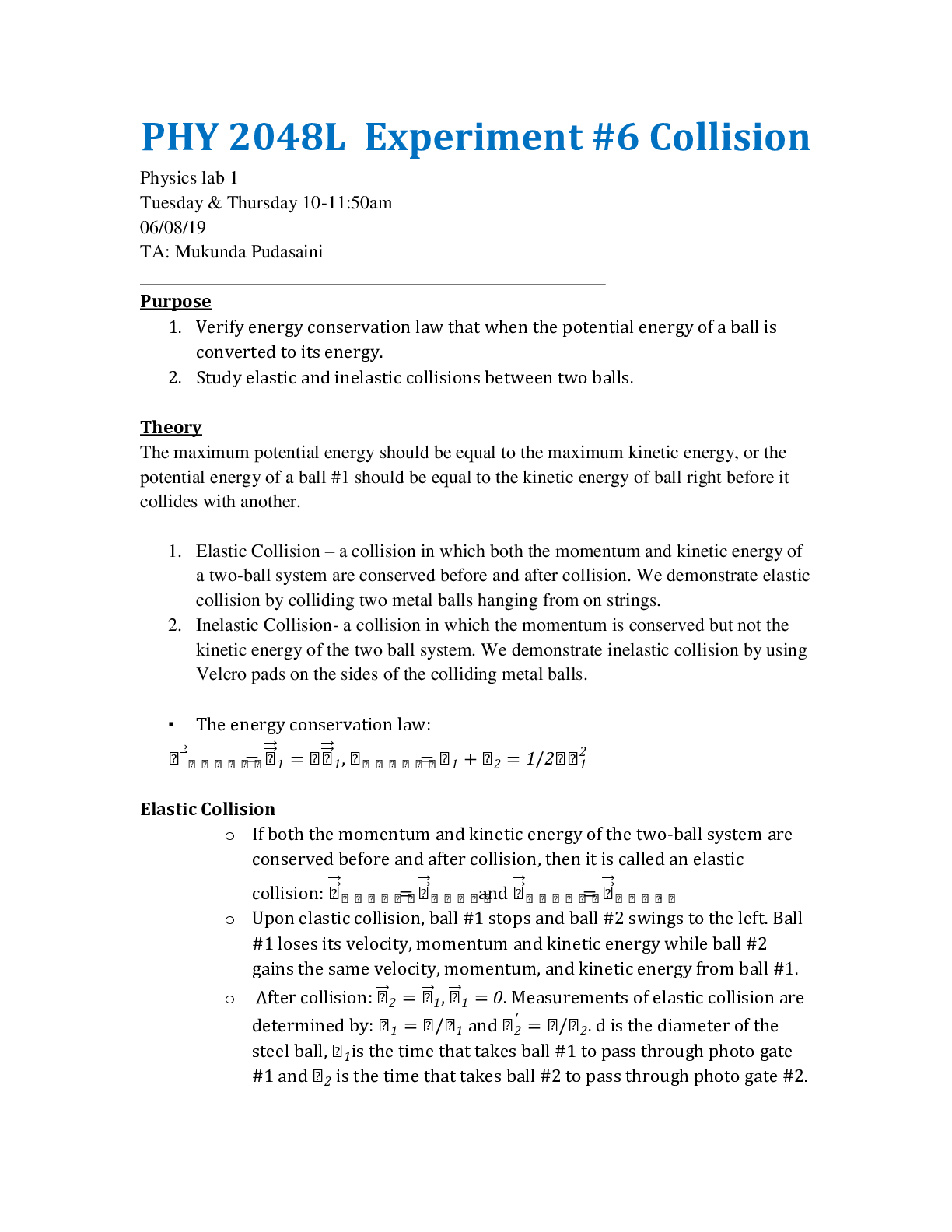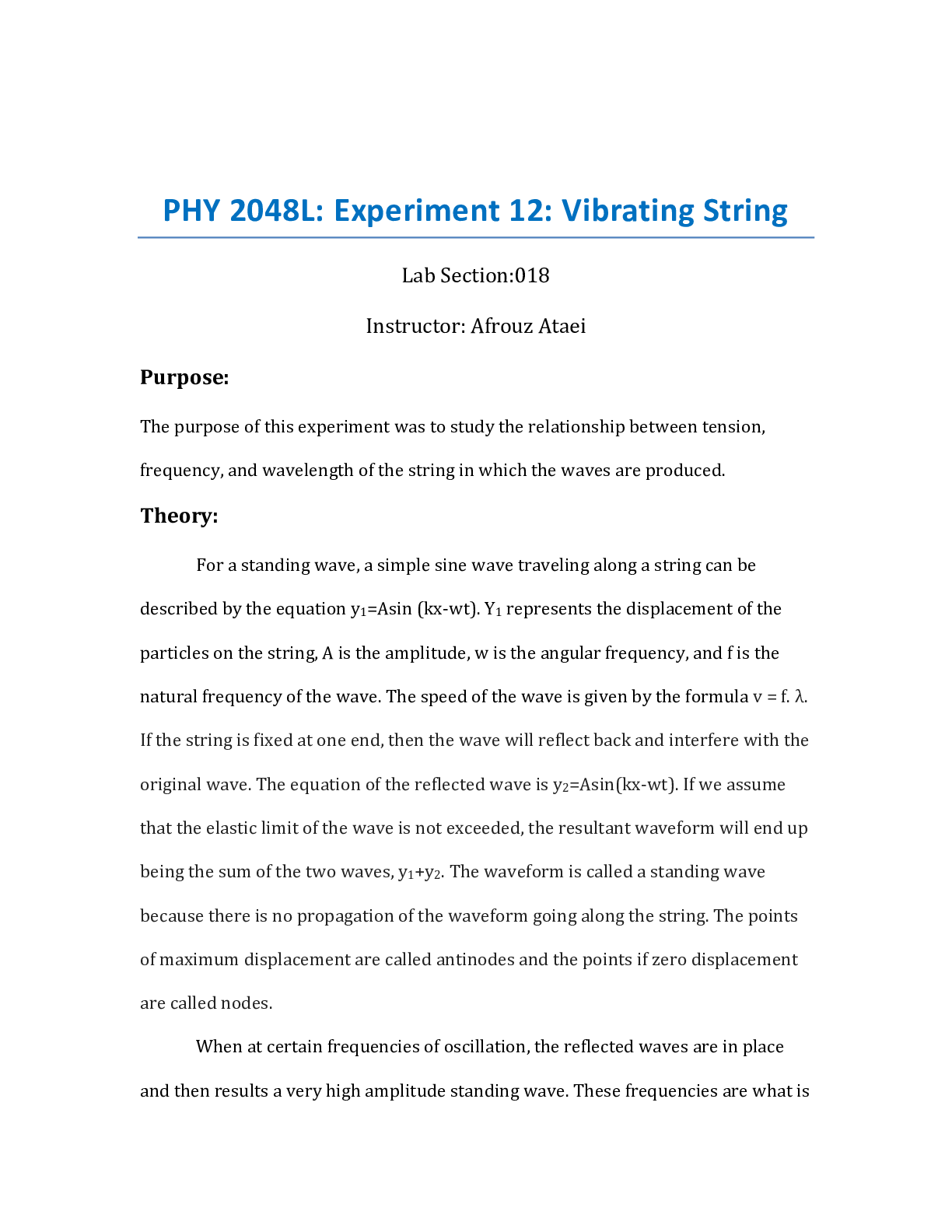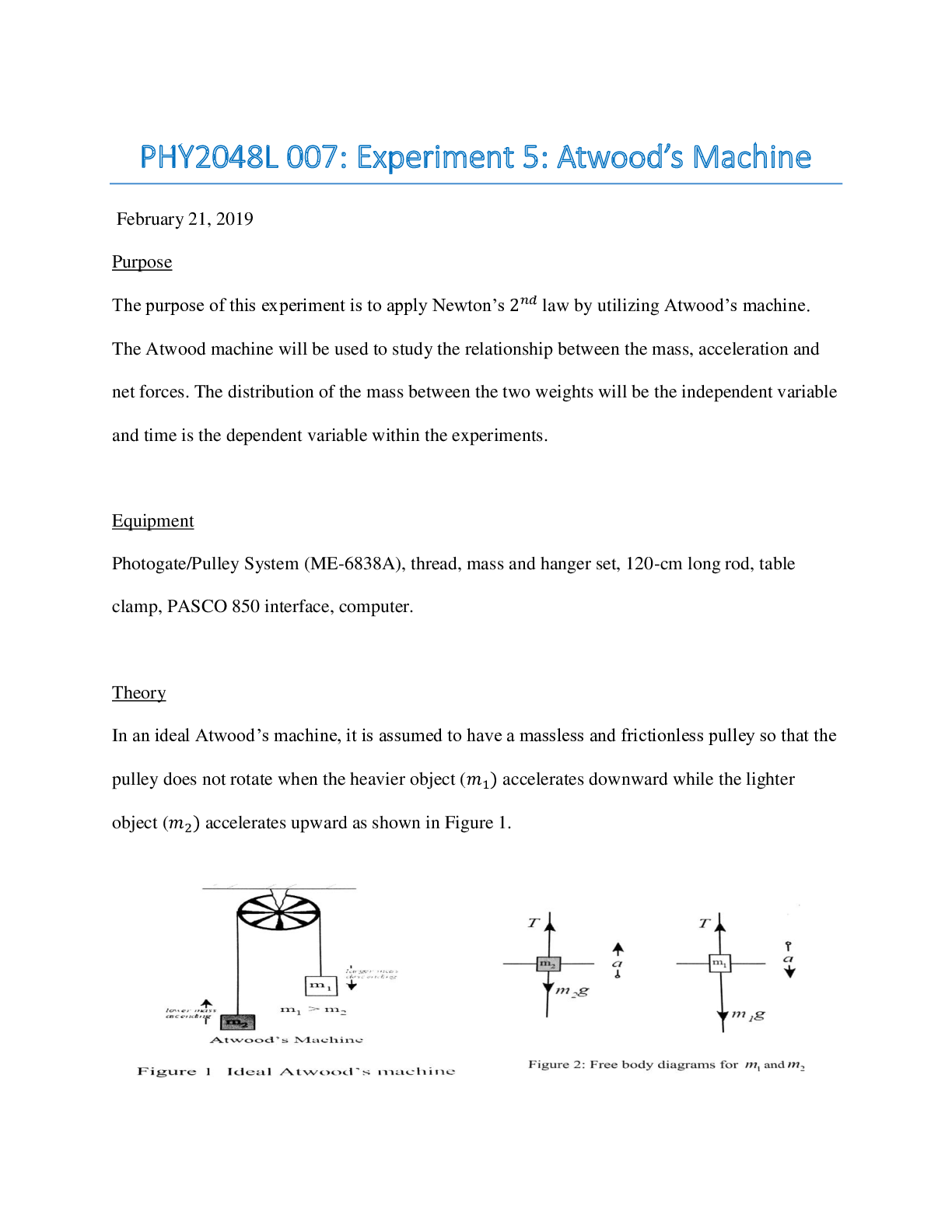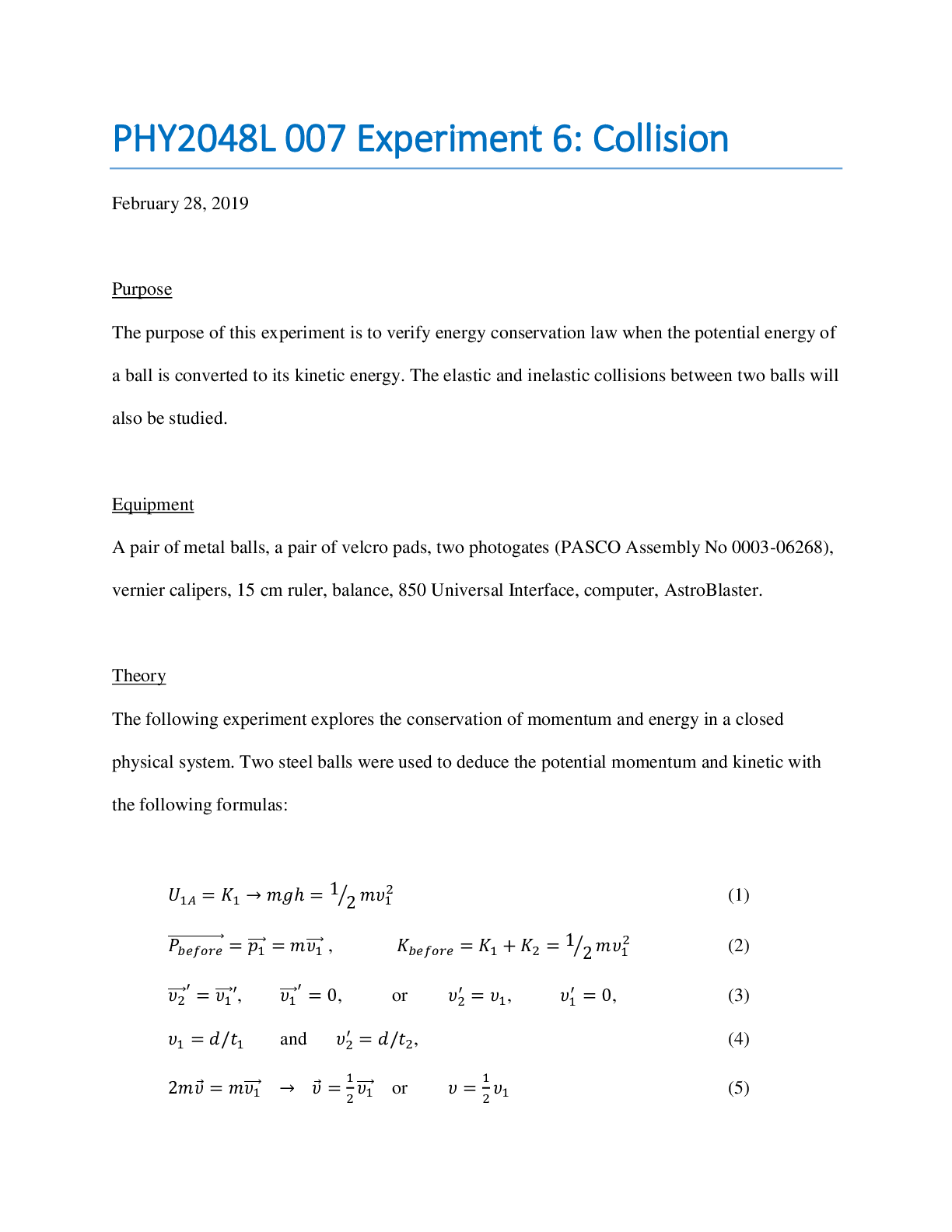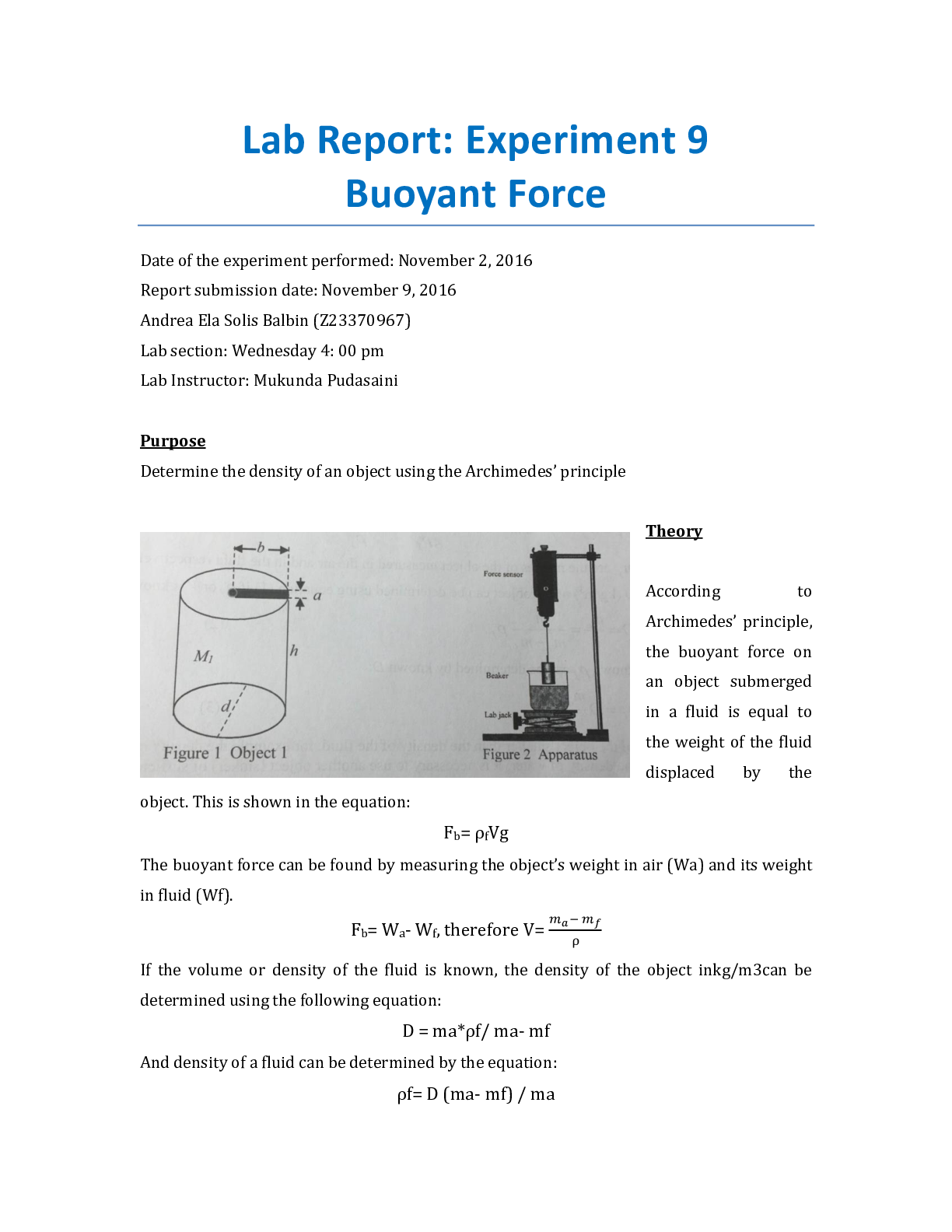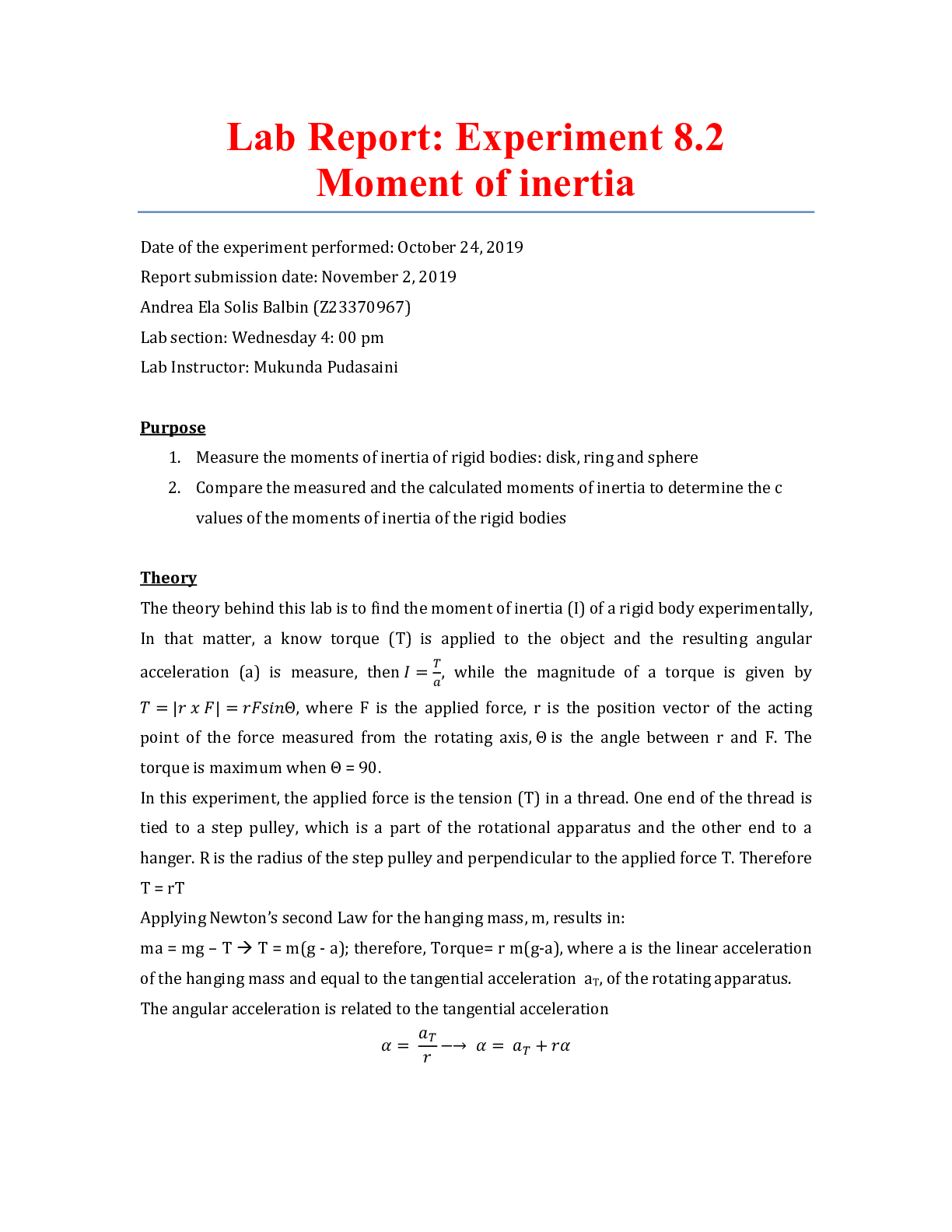Physics > Lab Report > Florida Atlantic University - PHY 2048L Experiment 3: Projectile Motion: Purpose: Verify the fligh (All)
Florida Atlantic University - PHY 2048L Experiment 3: Projectile Motion: Purpose: Verify the flight range and flight time of a ball launched at an angle with an initial velocity.
Document Content and Description Below
PHY 2048L Experiment 3: Projectile Motion Roshni Patel Lab Date: 05/23/19 Report Date: 05/30/19 Lab Section: MW 2:00-3:50 PM Instructor: Paul Alessandro Tatasciore Purpose The purpose of this e... xperiment is to verify the flight range and flight time of a ball launched at an angle with an initial velocity. Theory The theory behind this lab is based on the following drawing of the lab setup and the equations below it: The variables represent the following: x and y are the instantaneous horizontal and vertical positions of the ball at moment t x = 0 the initial horizontal position of the ball y = 0 the top level of the timing pad which is different from the floor level θ (degree) the angle of the initial velocity above the horizontal υ_0 (m/s) the initial speed of the ball g = 9.80 m/s2 acceleration due to gravity y0 (m) the initial vertical position of the ball (vertical distance from the bottom of the ball to the top of the timing pad) γ_max (m) the highest vertical position that the ball can reach during its projectile motion T (s) the total flight time of the ball from shot off to hit the timing pad R (m) the flight range (horizontal distance from the release point to the landing point on the timing pad) The lab is based on projectile motion, where an object is launched from an angle and exhibits a parabolic path. The angles and force of the launch are changed and the changes in initial speed, flight range, and total flight time are measured. Experimental Method The following equipment was used during the experiment: projectile launcher (ME-6800) and plastic ball, two photogates (ME-9204A), plumb bob, photogate bracket, metric tape ruler, white paper, carbon paper, time-of-flight timing pad (ME-6810), PASCO 850 interface, and a computer. The plastic ball was launched from two distances: Short Ranger and Medium Ranger. The launcher was set at 3 different angles: 0, 30, and 45. Four measurements were done with three trials each and the initial speed, flight time, and flight range were recorded: Measurement 1: Short Ranger at 0 degrees Measurement 2: Medium Ranger at 0 degrees Measurement 3: Short Ranger at 30 degrees Measurement 4: Short Ranger at 45 degrees Questions and Exercises Flight range R does depend on θ as seen in equation 4: R=(υ_0 cosθ) T (4) R is dependent on the initial velocity, the angle of initial velocity, and the total flight time Flight range R does depend on the initial velocity of the ball as seen in equation 4: The highest vertical position that the ball can reach, γ_max, is dependent on θ as seen in equation 5: [Show More]
Last updated: 1 year ago
Preview 1 out of 5 pages
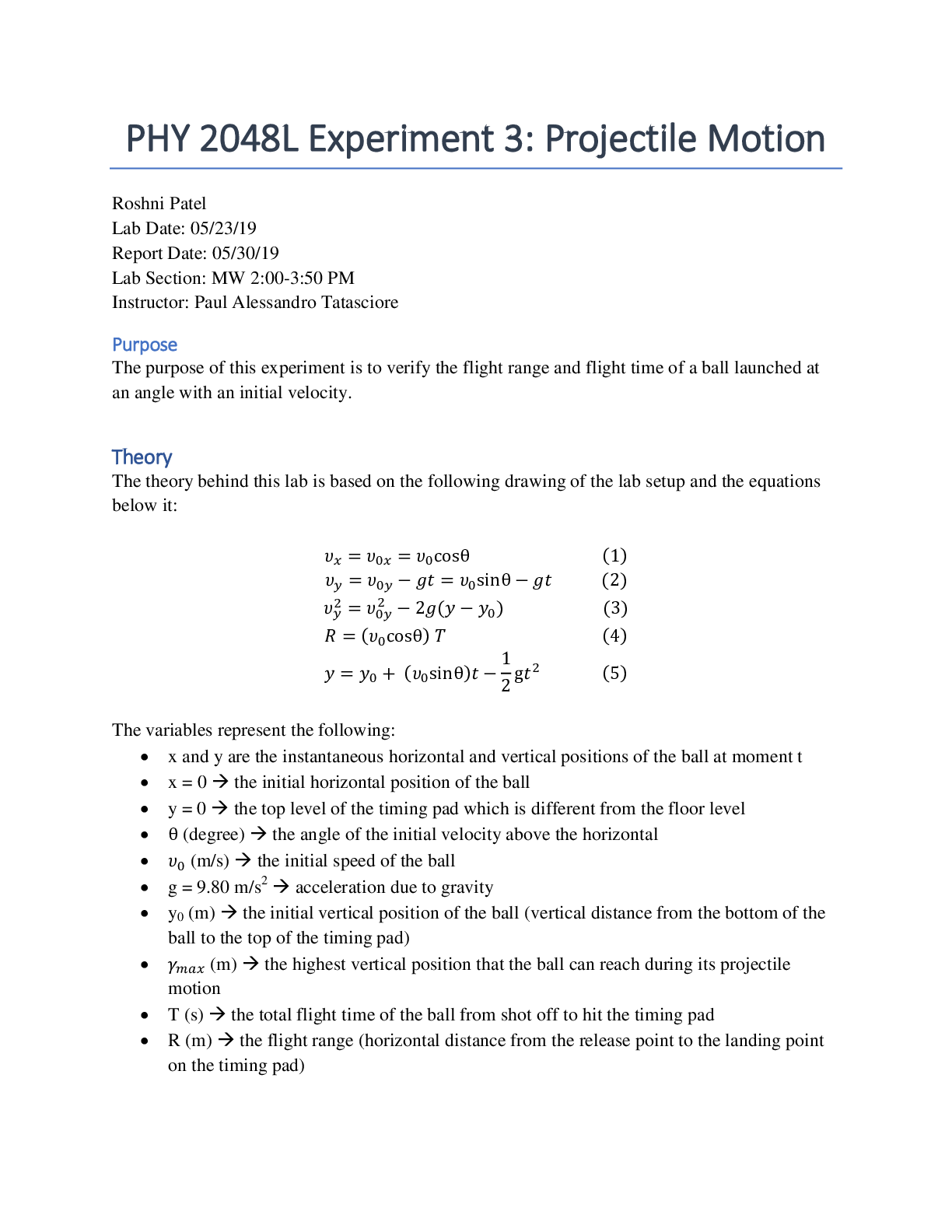
Reviews( 0 )
Document information
Connected school, study & course
About the document
Uploaded On
Oct 01, 2020
Number of pages
5
Written in
Additional information
This document has been written for:
Uploaded
Oct 01, 2020
Downloads
0
Views
137


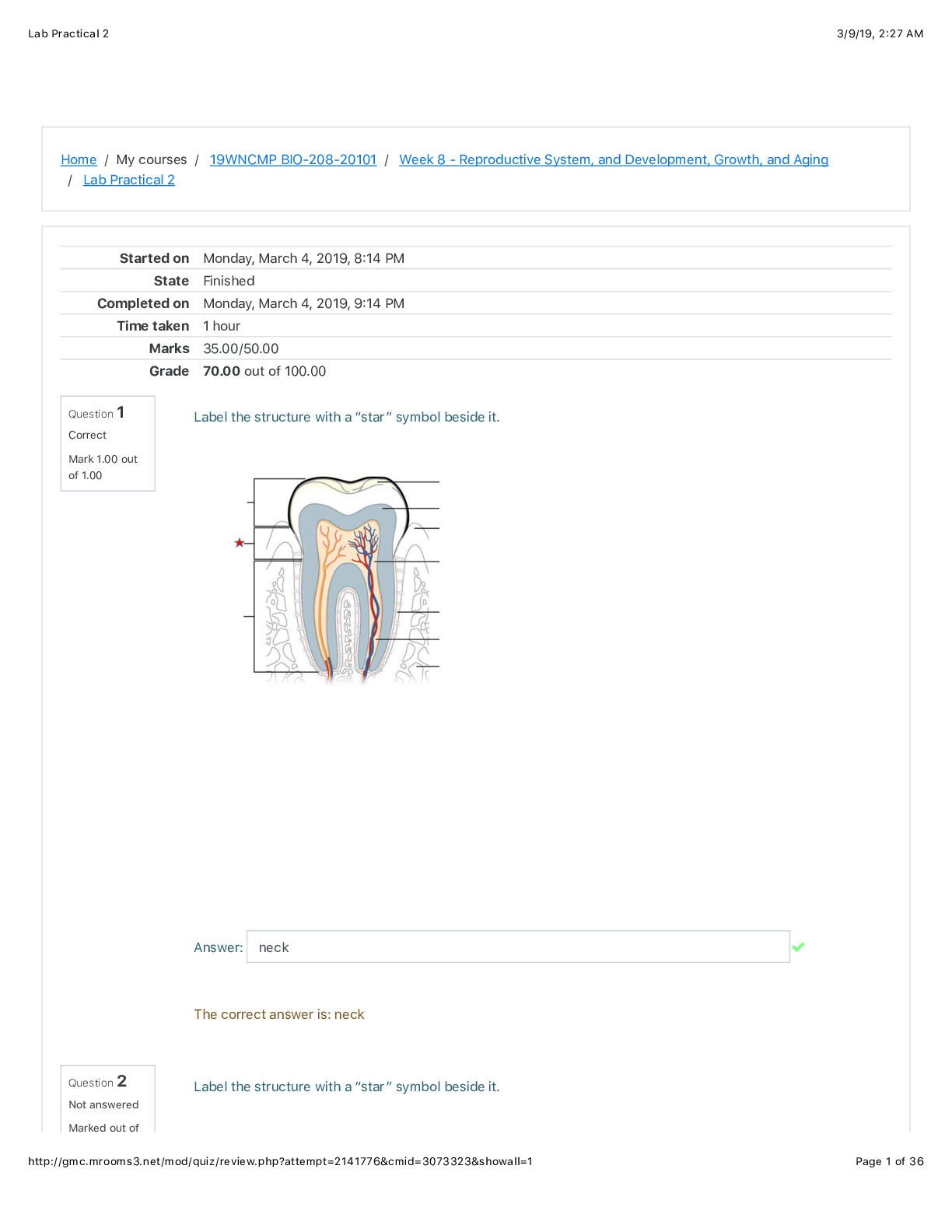
 (1).png)
